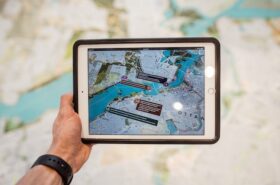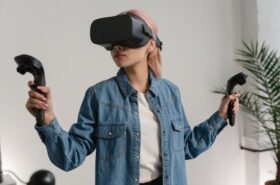Virtual Reality (VR) is a computer-generated simulation of an environment that can be interacted with, seemingly real or physically, by a person using special electronic equipment.
Virtual Reality has been applied in various fields such as entertainment, architecture, engineering, and medicine. VR has been used in the military to train soldiers and pilots. It has also been used to treat pain management and post-traumatic stress disorder, among other things.
Virtual reality applications are vast, and your imagination only limits them. Let’s discuss the applications of Virtual Reality in great detail.
Applications of Virtual Reality
1. HealthCare
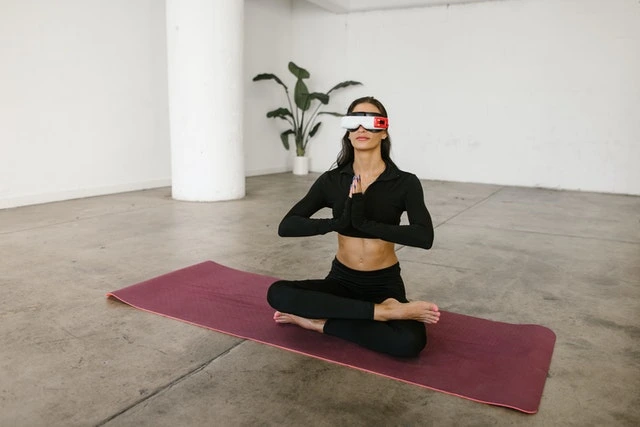
In healthcare, virtual Reality has a significant impact. EaseVRx was given FDA approval in November 2021 for adult pain management under a prescription. To help reduce chronic pain, the system employs cbt and other behavioral principles such as stress relief, limelight, imaginal recognition, and others. VR has even been used to treat severe burns.
VR can help healthcare professionals better prepare for their roles in the operating room, whether junior doctors explain the diagnosis and effective plans or orthopedic surgeons performing surgery. Companies such as Osso VR allow surgeons to engage with medical instruments in virtual Reality and practice surgery on virtual carcasses, allowing them to become more familiar with new devices and proficient in implanting them.
Virtual Reality (VR) can also be used to treat mental health conditions, with Virtual Reality Exposure Therapy (VRET) being beneficial for treating Post-traumatic stress disorder and fear. Spending time in virtual reality can be therapeutic in numerous other ways.
2. Education

Virtual Reality is a fascinating technology that can be used for education. It is a tool that has the potential to make learning more engaging and interactive.
VR headsets are already being used in the classroom to provide students with an immersive experience. They can learn about historical events, get a closer look at the solar system, explore some of the world’s most beautiful landmarks or have an up-close view of some of their favorite animals.
For instance, VirtualSpeech offers VR training for soft skills like sales, effective listening, and presentation skills. They combine virtual Reality (VR) practice with online simulations and e-learning to allow students to hone their VR skills in various settings, including meeting spaces and theatres.
VR training substantially improves learning retention levels thanks to the experiential learning it offers. In a well-known study on the efficacy of VR learning for soft skills, PwC discovered that people could learn up to four times faster in VR. Virtual Reality in education is still in its infancy, but it has great potential to become one of the essential tools for teaching and learning in the future.
3. Architecture
Virtual Reality has been widely used in the design and construction of buildings. It provides an interactive space experience and helps clients visualize their future home.
Architects can use Virtual Reality in different ways, such as:
- Showing the client what a building will look like before it is built
- Creating 3D walkthroughs of buildings
- Generating virtual environments for architectural planning and design
Even though architects have long used 3D models, immersive tools enable them to comprehend and explore space at the most in-depth level possible. Even the BBC has a TV program in the UK called Your Home Made Perfect, based on two competing architects showing homebuyers their Virtual Reality (VR) designs before they are built.
4. Retail

Retailers have been experimenting with virtual Reality for a few years now. The goal is to allow customers to experience a product in a more immersive environment than what is possible in the physical store.
The idea behind this technology is that it will allow consumers to see products from every angle and make a purchase decision without having to visit the store. There are many different use cases of VR in retail, but one of the most popular ones right now is using VR headsets to try on clothes before purchasing them to see how they would look on us, thanks to body-scanning technology and virtual reality retail experiences. Customers will know before they order whether the item fits their shape and size, which lowers the environmental cost of production and shipments fast fashion. This saves customers’ time while also being more sustainable.
The European retailer ASOS, which invested in the software development firm Trillenium, is one of many businesses seeking to bring us the VR shopping experience, when the first Metaverse Fashion Week debuts in March 2022, designers like Hugo Boss will be among the first to participate.
5. Interior Design
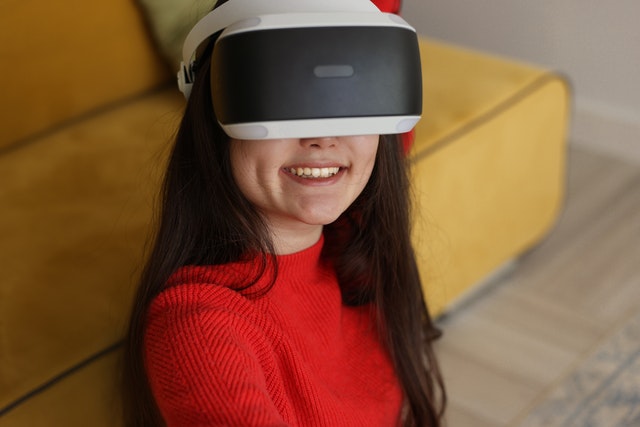
Virtual Reality is not just for gaming and entertainment anymore. Interior designers are using this technology to help clients envision their new homes before they are built.
The use of virtual Reality in the interior design process has been on the rise in recent years, with many companies now utilizing it as a tool for designing homes or other spaces. It can showcase various design options, create a virtual space for customers before they make the final purchase, and even sell furniture online. This saves a lot of time, money, and resources by allowing them to experience their designs beforehand instead of just imagining them.
6. Sports
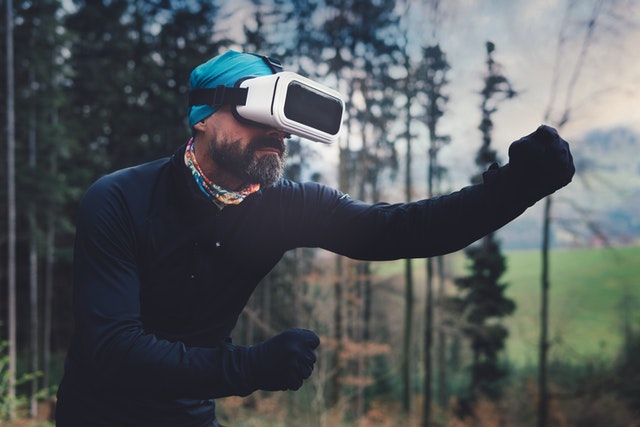
With several VR companies specializing in watching live major sporting events, the way we watch sports is already evolving. Virtual reality lets you watch the NBA, NFL, and other sporting events. BT Sport provided free 360-degree VR coverage of the UEFA Champions League final via YouTube and the BT VR app. As if you were there, you could watch the game from various vantage points throughout the stadium.
Big Screen VR and NBC have announced that they will live stream the opening and closing sacraments of the Beijing Olympics in virtual Reality and offer highlights for some of the events. These companies enable viewers to watch the Super Bowl together in VR. You can even throw a ‘virtual Olympics viewing party. This is a fantastic way to bring live sports events to people who cannot travel to the venue or cannot afford to buy tickets to watch the games in person. As an alternative, VR can give them a sense of existence and the environment.
7. Events, Conferences and meetings

The use of virtual reality in events, conferences and meetings has increased exponentially over the last few years. VR allows people to experience something they cannot experience in real life. This new technology has been used for everything from marketing to training. It also allows organizers to create interactive spaces where participants can participate in activities such as product demonstrations.
Virtual Reality has the potential to help event planners in many ways, such as by providing them with a cost-effective way of designing their event space before it is built or by creating an interactive map for visitors on site, so they know where they are going. VR gives attendees a better understanding of what they are looking at. It can be used to create presentations, show off products and services, or even as a tool for training purposes. Attendees can be transported into any setting they want to see first-hand – from World War II’s battlefields to the ocean floor’s depths.
8. Marketing
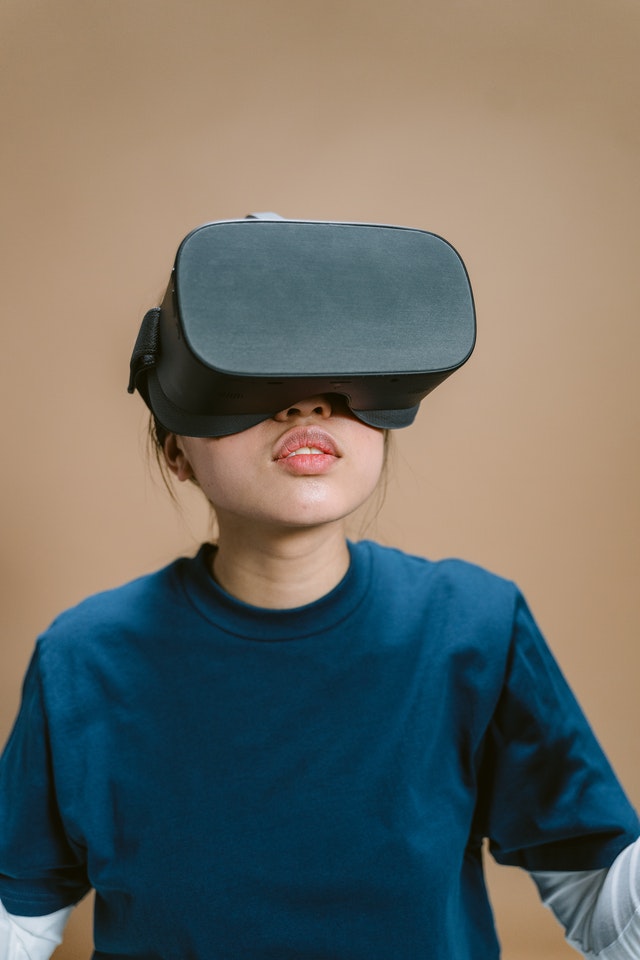
Marketing is a new way of advertising and is still in its early stages. But it’s only recently that it’s catching on as a viable marketing tool. This is because VR is still in its infancy, and many technical problems must be solved before it becomes mainstream. But once marketers start using VR, they’ll see how it can provide them with boundless opportunities to create immersive brand experiences and deliver messages more captivatingly than traditional marketing campaigns.
The main goal of VR marketing is to create an immersive experience for the customer. This can be done by placing them in a virtual world or showing 360-degree videos.
FAQs
What are the challenges of VR?
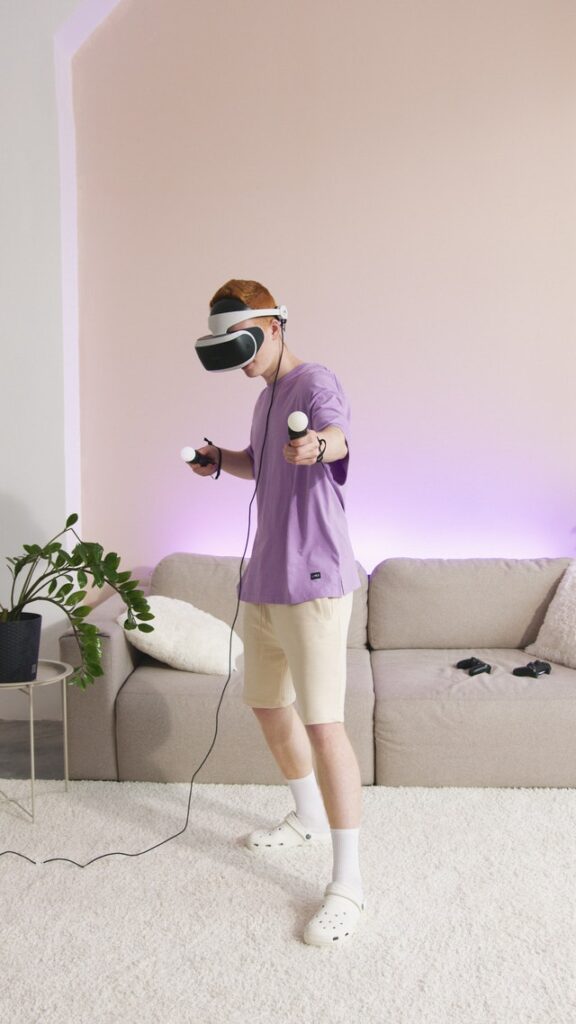
Virtual Reality is a new medium that is still in its infancy. It is facing many challenges to be able to become a mainstream technology. First of all, it is not as immersive as it could be. Second, there are some problems with the hardware, like motion sickness and the lack of sense of touch. Thirdly, there is not enough content available for VR users to enjoy.
What equipment is needed for Virtual Reality?
In order to experience virtual Reality, you need a VR headset. This is a device that you wear on your head, and it will show you different images and videos.
There are many different types of VR headsets available on the market. Some of them are very cheap while others can be quite expensive.
Different types of VR headsets:
- Google Cardboard: This headset is made from cardboard, some lenses and magnets.
- Samsung Gear VR: This is made from plastic, has a display and connects to your phone via Bluetooth or USB cable.
- Oculus Rift: This headset has the best resolution and connects to your computer via HDMI or USB cable.

